What are some plant-based calcium sources — foods that are rich in this valuable nutrient and how optimal is their absorption by the body? For a vegan diet, you can find plenty of calcium in leafy green vegetables, and 40 to 60 percent is absorbable by our body.
It was once believed that the oxalates in certain plant foods messed with our body’s ability to absorb calcium by binding with it and forcing it through the elimination process, but the latest research proves otherwise.
Proper absorption
For proper calcium absorption, you need to consume food sources that contain types of calcium that are easily digested, assimilated, and absorbed. Keep a watchful eye on your protein, sodium, and other mineral intakes, as they all affect this process. Especially important to note is the special relationship between magnesium and calcium. These “bosom buddies” rely on each other, and both need to be present for proper absorption. Usually it’s in a 2:1 ratio, with two parts calcium to one part magnesium.
Because of the calcium-magnesium ratio in dairy products, our bodies do not properly absorb the calcium it contains. Excess stores of calcium accumulate in our blood and urine and can cause kidney problems or failure or cause kidney and gall stones.
The oxalic acid question
Some greens, like spinach, contain oxalic acid, which may also cause a problem for those who are susceptible to kidney stones and gall stones. If you’re sensitive, you might want to limit your consumption of certain leafy greens to several times a week. Also, drinking plenty of water can help prevent the formation of stones by diluting the concentration of oxalic acid and dissolved minerals in the urine.
Vitamin D's Role
The presence of vitamin D also affects calcium’s absorption capabilities. The body easily absorbs vitamin D with just 15 minutes of exposure to sunshine per day. Vitamin D is produced within the body when the sun hits your skin.
The sun triggers ergosterol, which is transformed into vitamin D, which helps us absorb calcium from the foods we consume directly into our bloodstream. Vitamin D is stored in the liver, and many believe that what you’re exposed to in an average summer can be stored within your body and used throughout the winter. The liver is capable of storing up to a 3-year supply of vitamin D at one time.
Today, many foods are fortified with calcium, magnesium, and vitamin D. Check your grocery and health food store shelves for fortified soy-based products, cereals and grain products, boxed mixes and food items, and orange juices and other beverages. With all these choices, it is virtually impossible to have a calcium deficiency if you consume a well-balanced vegan diet.
You do need to keep an eye on these fortification levels, however, as overly excessive amounts of calcium and vitamin D in the diet often lead to health concerns and problems, as previously discussed. You will absorb more calcium if you spread out your food choices throughout your meals and throughout the day.
Comparing Food Sources
The U.S. RDA for calcium is between 800 and 1,200 milligrams, depending on your protein intake, but many feel that that number is too high. The World Health Organization (WHO) recommends between 400 and 500 milligrams calcium daily—half of the U.S. RDA. Plant-based sources of calcium are generally more absorbable than animal sources because we can digest the plant-based foods easier and break them down and utilize the nutrients better.
Proteins also have a negative effect on calcium stores because amino acids contain sulfur, which in turn affects the body’s pH balance. Plant-based proteins tend to have lower concentrations of sulfur-based amino acids and are more alkaline in nature. Meat, on the other hand, is very acidic, and the body reacts to re-balance itself by leeching alkaline calcium out of the bones to neutralize the acid. For every 1 gram protein in your diet, you can expect 1 milligram calcium to be lost or eliminated in your urine.
Through his research, Dr. T. Colin Campbell of the famous China Project (see Chapter 3) has determined that even though most Chinese consume no dairy products in their daily diets, osteoporosis is uncommon in China even though they consume only half the amount of calcium as compared to Americans. Instead, they obtain all their dietary calcium from plant-based sources.
Osteoporosis
Osteoporosis is a bone-thinning disease that can rob you of 30 to 40 percent of your bone tissue. Calcium passes from the bones, filters through the kidneys, and is then eliminated in the urine. Factors like excess salt, animal protein, and high-protein dairy products in your diet cause rapid calcium losses and increase your chances of developing osteoporosis. Women in the United States take note, as osteoporosis affects 1 in 4 women in North America.
Ironically, osteoporosis is highest in those countries that consume the highest amount of calcium from animal-based sources. Because the high concentration of acidic protein in animal-based sources causes the body to lose more calcium than it consumes, a vegan diet will actually reduce your chances of developing osteoporosis.
Plant-Based Powerhouses
Many plant-based foods are rich in calcium (and many are also excellent sources of protein; see Chapter 5). In the leafy green vegetable category, you have many choices, including spinach, collards, kale, Swiss chard, lettuces, rhubarb, mustard and turnip greens, and even broccoli.
Soy foods have naturally occurring calcium and are also often enriched to further increase the calcium amount. Calcium-rich soy products include soy milk, nondairy cheeses, tofu, okara, tempeh, and veggie burgers and other mock meats, just to name a few. In cereals and grains, calcium can be found in quinoa, amaranth, corn, wheat, and brown rice. And you might be surprised to learn that many sea vegetables, nuts, seeds, dried fruits, and even blackstrap molasses all contain significant amounts of calcium.
A small sampling of vegan foods that are high in calcium:
- 1 cup hijiki — 648 milligrams
- 1 cup tofu — 516 milligrams
- 1 cup cooked collard greens — 358 milligrams
- 1 ½ cups calcium-fortified oatmeal — 326 milligrams
- 1 cup calcium-fortified orange juice — 270 milligrams
- 10 medium figs — 270 milligrams
- 1 cup cooked spinach — 244 milligrams
- 1 cup cooked white beans — 160 milligrams
Excerpted from The Complete Idiot’s Guide to Vegan Living* by Beverly Lynn Bennett and Ray Sammartano. For great vegan recipes (including lots of desserts) by Chef Beverly Lynn Bennett, visit The Vegan Chef.
- For more tips on plant-based nutrition, make sure to browse VegKitchen’s Nutrition page.
- For lots more features on healthy lifestyle, please explore VegKitchen’s Healthy Vegan Kitchen page.
*This post contains affiliate links. If the product is purchased by linking through this review, VegKitchen receives a modest commission, which helps maintain our site and helps it to continue growing!


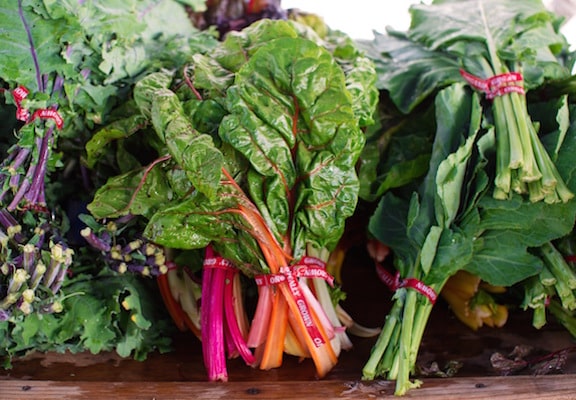
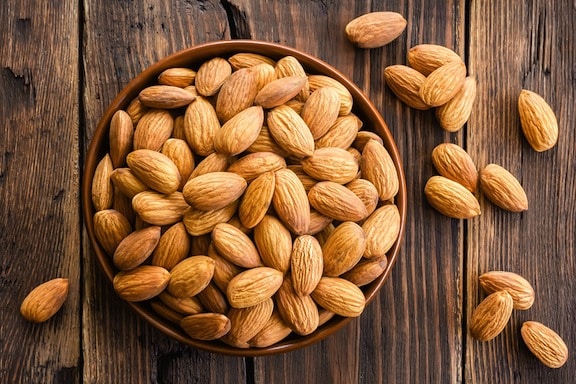

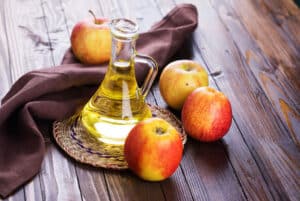
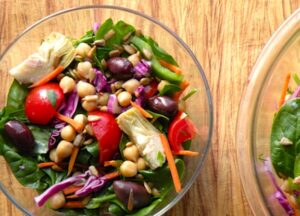
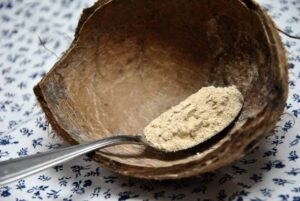
Linda Hicks says
According to the following link, Quinoa has 31.5 milligrams of calcium per cup not 1,200 mg.(calcium in a quart of milk) as per your information above.
http://nutritiondata.self.com/facts/cereal-grains-and-pasta/10352/2
Nava says
You are right about that. This is by another author, and I'll edit that claim. While the calcium content is lower, some nutrition experts believe that the calcium provided by grains like quinoa, as well as that provided by dark leafy greens, is more readily absorbed by the human body. Thanks for pointing out the inaccurate statistic!
Terri says
Can you give us a study citation for the new information you reference above, e.g. that calcium in plant materials is well absorbed and not blocked by oxalates?
Sarah says
A lifetime of exercise is most beneficial to retaining bone density. My kung fu teacher that's 80 years old has absolutely no signs of loss of bone density and he's been doing kung fu his whole life. I like quinoa too, but I'm kind of dismayed about how it's made the cost go up quite a bit for the Bolivians in the past 10 years or so.
Chris says
Hey, great article! Check out this article for more info on vegan calcium sources: http://ingredientcritic.com/vegan-myth-2-vegans-don%E2%80%99t-get-calcium
Fuchsia Groan says
Only leafy greens with low levels of oxalic acid are good sources of calcium. Examples of these are kale and turnip and mustard greens. Spinach and chard are NOT good sources of calcium because they contain high levels of oxalic acid which block calcium absorption.
Nava says
This is a good point. I think collards would be a good source as well. Those dark leafy greens provide good quantities of absorbable calcium.
Freya Lynn Reed says
Here's the truth about Calcium! Stinging Nettles have like 5 times more Ca than cow's milk. Some types of figs also have more Ca, but I guess you were referring to dried figs in this article.
https://www.facebook.com/photo.php?fbid=235010256599145&set=a.163956000371238.24803.131369396963232&type=1
Anyways, great article overall!
Terri says
I had to leave this page because I could not stand the ad blinking on the side.. very irritating. I suggest you limit the advertising allowed on this site to fixed images..
Terribly annoying!
michael steinberg says
When trying to get enough calcium you have to balance the amount of phosphorous as well. Phosphorous does not come from meat sources only. Grains, seeds, legumes and nuts are all high in Phos. Thus vegans often consume as much as meat eaters. Phosphorous in excess of 700mgs per day causes the body to neutralize the P by drawing Calcium from the bones in spite of the amounts you may be consuming. So whether you are aiming for 800-1200mgs of Calcium per day or only 500-600mgs you have to keep the phosphorous below approx. 700mgs. This requires tracking until you become used to the sums. A spreadsheet is handy and a website with the amounts of both Ca and P per 100 g. Anything short of this is just guesswork. Vegans have no worse bone density than non vegans. However in North America they have no better bone density either. This is perhaps why.
michael steinberg says
Please correct my comment of April 26 to read: Phosphorous in excess of 900 mgs per day causes... (not 700)
Zaz says
What about quinoa greens? They contain 2920 mg per 100g of calcium.... Although they are high in oxalic acid would it still be high in calcium since it's in high amount? Like would some of the calcium bind to the oxalic acid and the rest be available for absorbtion by the body? What's anyone's take on that ? 🙂
Nava says
Great points! One issue is that quinoa greens aren't widely available. Perhaps in the future they will become more so. The question regarding the oxalic acid is a good one, but one I can't answer. Perhaps someone else will weigh in.
Zaz says
Here's my source for the nutritional value: alternative field crops manual, university of Wisconsin and university of Minnesota
michael says
The problem with quinoa greens is the ratio of calcium to phosphorous which is almost 1:2 So in other words as you take in the calcium you take in twice the phosphorous which leads to bone loss (much like an acidic high protein diet. So even though you would get high calcium you would get way too high phosphorous. This is exactly the problem with milk. What your overall calcium phosphorous ratio for the day should be is closer to 2:1 or twice as much calcium as phosphorous.
With regard to oxalic acid my understanding is that cooking causes the oxalic acid to change in structure making it harmful to the body to some degree. Raw in small amounts is fine. How much is in quinoa compared to spinach?
Nava says
Thanks for your input, Michael. Very good information.
Zaz says
Thanks for your info Michael, I haven't been able to find the exact content of oxalic acid of quinoa greens but my understanding is that it's more. This issue seems to be quite controversial from what I've read and opinions are so extreme, It's hard to know who to listen to. It either causes kidney stones or cures cancer! .... Also, quinoa greens (from the source listed above) has 370mg of phosphorus to 2920mg of calcium per 100g. And it is so good!
Maureen Luttrell says
Nice information. I didn't watch my calcium intake. Never thought about it, that is, until I sprained my knee and my chiropractor x-rayed it. I found out that my left knee is bone on bone and the right one is heading there. I thoroughly believe in Organics and natural healing. While studying, I've found important information on Soy. Please look at Kaayla Daniels' life work on soy. It isn't healthy. Full of heavy metals, young plant, old plant, organic or not. Dr. Mercola won't even use it for anything! Thank you.
Amy Fish says
My Mom has severe bone loss. Also COPD. she is getting off prednisone. Ahe is having a rough time. How can help build her up?
Nava says
Amy, see some of the recommendations in the article, and also, you may want to take her to a skilled Registered Dietician. Lots of dark leafy greens like collards and weight-bearing exercise like walking are also important.
Maiken says
Can you post the citation for the new findings that calcium is more absorbable when consumed from plants?
Elizabeth Ingham says
I'm currently in Nutrition class in the University of Phoenix. Why does my test say that plant sources of protein provide LESS absorbable forms of iron, zinc, and calcium when compared to animal sources when this article claims the opposite?
Nava says
Propaganda by the meat and dairy industries ...
Elizabeth Ingham says
I don't mean to seem like I'm pestering, but may I see the link to the study that proved it? I like learning new things and I could be able to present the information to my classmates and teacher.
Elizabeth Ingham says
I find it interesting that it took no more than 6 minutes to post to a question on why text books say one things and this article another, but the individual refuses to answer to a request to citation from not only myself, but another as well.
Nava says
Here's an article with plenty of citations. Hope this helps: http://www.plantbasedpharmacist.com/2014/03/the-calcium-myth-more-is-not-better.html
Betsy says
So, Nava, that article with plenty of citations doesn't actually go anywhere. Why not post some good citations and studies which prove your point?
Betsy says
Also, Nava, you were asked to provide your citations for saying that oxalates are not an interference to absorption of calcium back in January of 2011...I would like to know where you got that information. Thanks.
Lorraine Roberts says
How to get maximum absorption of calcium,but still ovoid high oxalates and phosphorus containing foods in order to optimize calcium absorption seems very overwhelming, since many high calcium foods like kale also contains a fair amount of calcium blocking oxalate in it. So what do you do, eat an extra amount of high calcium containing vegies to counteract the oxalates in them? Very confusing. Then they say avoid coffee and any high caffeinated foods, if you are trying to get calcium into your bones. But many of us are also trying to reduce our cancer risk,and alheilmers risk,by drinking green tea that's said to counteract cancer,
and drink coffee, that's said to reduce alheilmers desease.What do you do? Instead of totally eliminating green tea,and coffee that I drink daily for it's flavonoid benefit,I make sure that there are at least 2,or 3 hours,between drinking tea, and coffee,before my calcium supplements, and eating calcium vegetables.
Kent says
Thanks for sharing this great info.
vinsin says
What about calcium and oxalates in hydrilla verticillata and Moringa?
Maher says
you missed to mention the black seeds , its one of richest source not only calcium but also magnisum, iron , fiber and vitamin c .....
i called it the magic seeds .
the nutrition facts in the link below
https://g.co/kgs/7pUMHJ
Andrew says
Great list. As you mentioned, Magnesium and Vitamin D both play an important role as well though it's tough to get the balance just right.
Thanks for sharing!
Linda Smith says
In addition to osteoporosis, I have kidney disease. The very foods that provide the most absorbable calcium are the ones that are hardest on the kidneys. Because of the severe condition of my bones - the surgeon said when he put the 10 screws in my back to hold rods, it was like putting screws in rotten wood - I am using Forteo.
Any help would be greatly appreciated.
Nava says
Hi Linda — aside from our general knowledge that dark leafy greens provide the most absorbable form of calcium, which the article points out, we're not qualified to give medical advice. You might do well to consult a Registered Dietician. Good luck and be well!